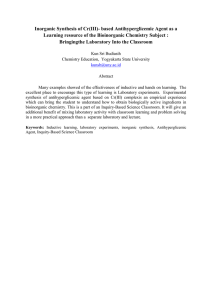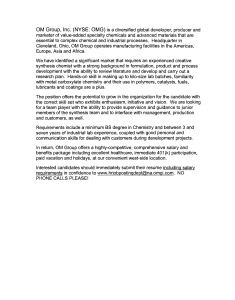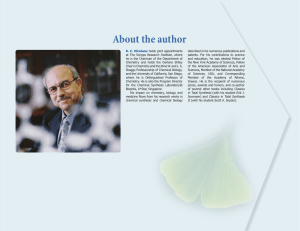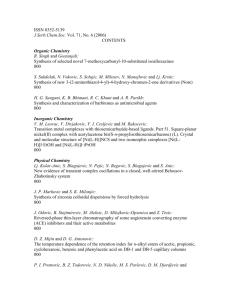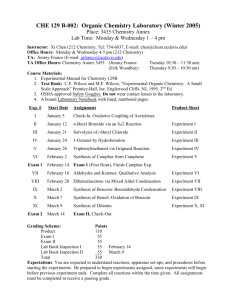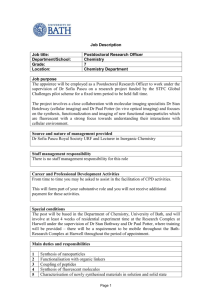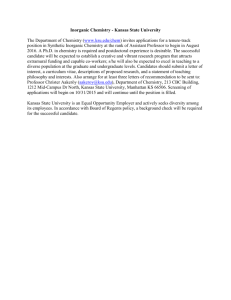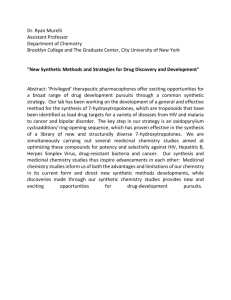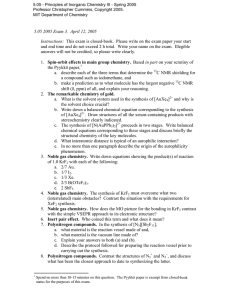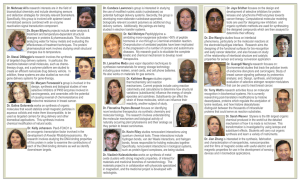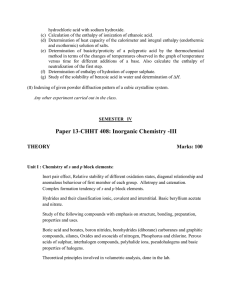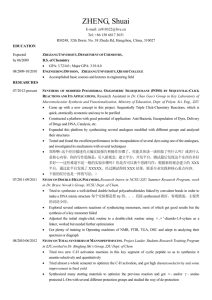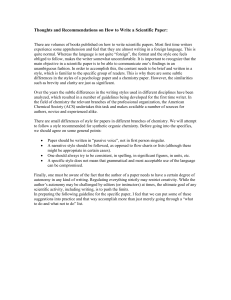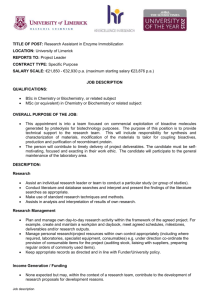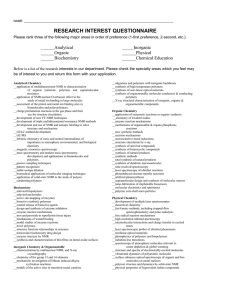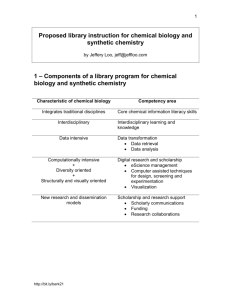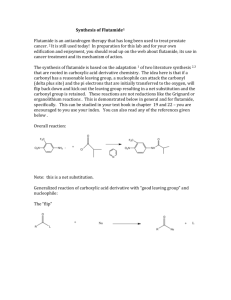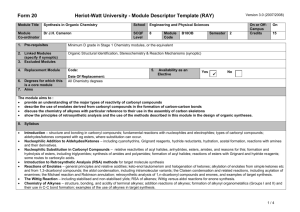chem 1270h: topics in inorganic chemistry
advertisement
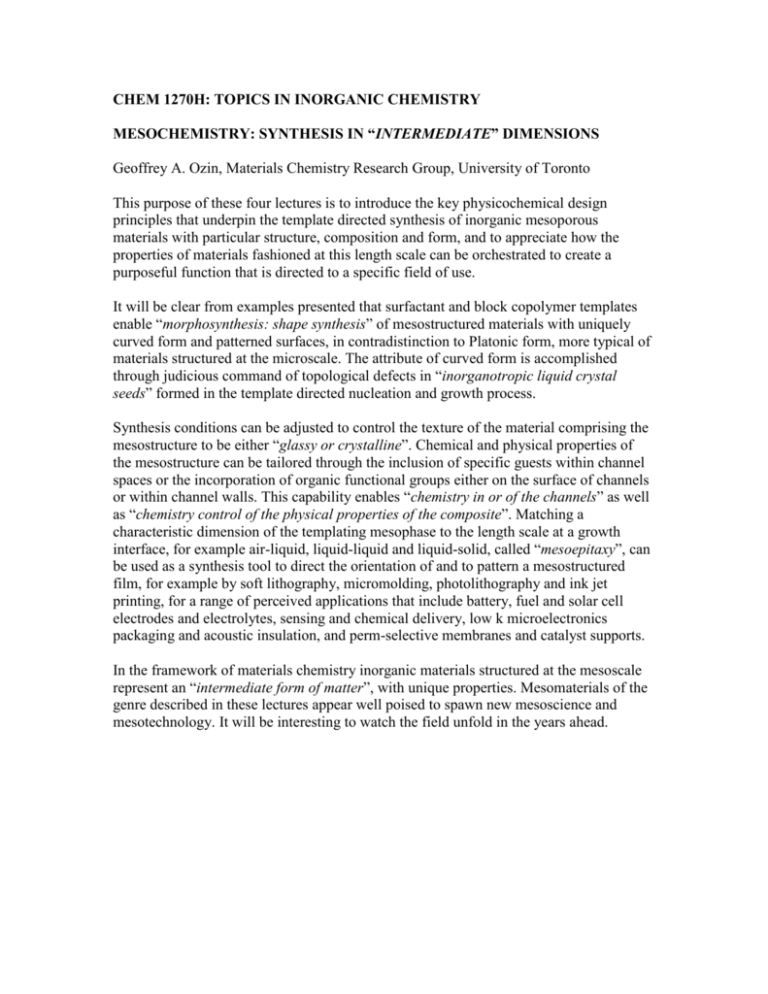
CHEM 1270H: TOPICS IN INORGANIC CHEMISTRY MESOCHEMISTRY: SYNTHESIS IN “INTERMEDIATE” DIMENSIONS Geoffrey A. Ozin, Materials Chemistry Research Group, University of Toronto This purpose of these four lectures is to introduce the key physicochemical design principles that underpin the template directed synthesis of inorganic mesoporous materials with particular structure, composition and form, and to appreciate how the properties of materials fashioned at this length scale can be orchestrated to create a purposeful function that is directed to a specific field of use. It will be clear from examples presented that surfactant and block copolymer templates enable “morphosynthesis: shape synthesis” of mesostructured materials with uniquely curved form and patterned surfaces, in contradistinction to Platonic form, more typical of materials structured at the microscale. The attribute of curved form is accomplished through judicious command of topological defects in “inorganotropic liquid crystal seeds” formed in the template directed nucleation and growth process. Synthesis conditions can be adjusted to control the texture of the material comprising the mesostructure to be either “glassy or crystalline”. Chemical and physical properties of the mesostructure can be tailored through the inclusion of specific guests within channel spaces or the incorporation of organic functional groups either on the surface of channels or within channel walls. This capability enables “chemistry in or of the channels” as well as “chemistry control of the physical properties of the composite”. Matching a characteristic dimension of the templating mesophase to the length scale at a growth interface, for example air-liquid, liquid-liquid and liquid-solid, called “mesoepitaxy”, can be used as a synthesis tool to direct the orientation of and to pattern a mesostructured film, for example by soft lithography, micromolding, photolithography and ink jet printing, for a range of perceived applications that include battery, fuel and solar cell electrodes and electrolytes, sensing and chemical delivery, low k microelectronics packaging and acoustic insulation, and perm-selective membranes and catalyst supports. In the framework of materials chemistry inorganic materials structured at the mesoscale represent an “intermediate form of matter”, with unique properties. Mesomaterials of the genre described in these lectures appear well poised to spawn new mesoscience and mesotechnology. It will be interesting to watch the field unfold in the years ahead.
